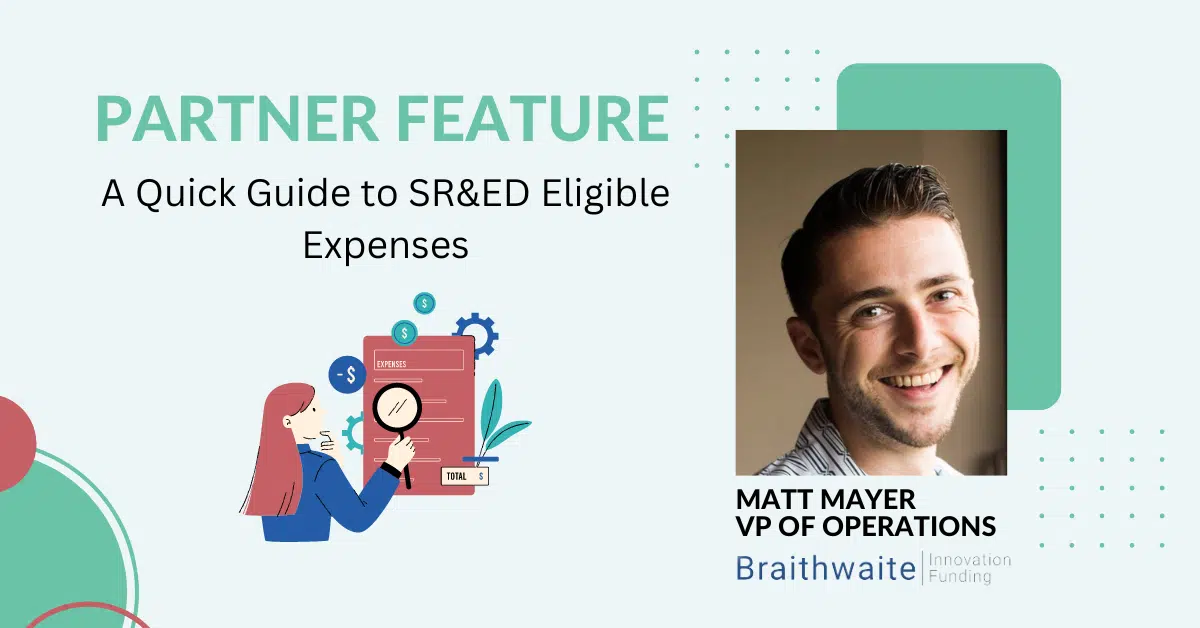Reading time: 8 minutes
SaaS startups are always concerned with having enough capital to build out their tech and grow. Being prepared for a capital raise takes time and thoughtful planning. Before reaching out to potential investors, there are important steps you should take to make sure you and your company are raise-ready.
But First, is it the right time to raise capital for your SaaS?
Before you begin the raising process, take a hard look at your company and decide if now is the correct time in your company’s life cycle to seek out capital. More than that, take the time to consider what the most effective capital may be for your company. The investor you are looking to attract often depends on what stage your company is at, how much money the company needs to raise, and how much time you have to raise it.
Types of capital
There are various types of capital your organization can pursue. Each type has different requirements and may benefit your company in different ways depending on its stage of development.
- Angel
Angel investors are typically involved in early-stage companies and are often the first to invest in a young company. They usually provide seed-level funding as well as mentorship or advisory to get a SaaS company the traction and runway needed to build out their tech.
- Venture Capital
After an Angel round, companies tend to seek out a Venture Capital raise.VCs can not only provide capital, but they can also offer strategic introductions to partners, employees or customers, and invaluable industry advice. In exchange, they usually require a board seat, veto rights, anti-dilution rights, a preferred equity position and a say in how the business runs.
- Venture Debt
For startup founders who prefer not to dilute their own shares in the company, debt financing may be an alternative source of capital. Venture debt puts your company in a stronger position for when you’re ready to approach VCs. To receive debt financing, the startup must agree to repay the principal plus interest. In Canada, SaaS startups can obtain debt financing against their SR&ED returns if they’re developing new technologies, or against their monthly recurring revenue. While sourcing VC investment typically takes longer to acquire, the turnaround on debt financing, assuming the company meets the necessary qualifications, can be quite quick.
Alternatives to Raising Capital
While equity or debt financing are often the first things organizations consider when looking for ways to expand their current offering, there are alternatives. These alternative sources may not put a lot of money in the bank. However, they are likely to help a SaaS startup tighten up their strategy and network within their industry. They may also serve to augment the company’s standing within the SaaS landscape.
- Incubators
Very early-stage SaaS companies could benefit greatly from an incubator, especially if they are in the process of seeking out Angels. Incubators are collaborative programs that help young startups launch. Many provide office or desk space, seed funding, training, mentoring and networking opportunities.
- Accelerators
Later-stage startups should seek out accelerators, that, like incubators, offer mentorship and training. Typically accelerator programs are a fixed term and end in a pitch event or demo day that angels, VCs, and venture lenders attend. Often the company that runs the accelerator may also decide, if the business model proves viable, to invest in select startups they’ve helped nurture.
The Basic Necessities for Raising Capital
Once you’ve decided on the type of capital you hope to attract, and the audience you plan to approach, it’s time to focus on some essential items required for a raise.
- A Pitch Deck
Essential to a raise is a pitch deck that helps explain your product and sell your offering. When preparing a pitch deck, follow these high-level suggestions:
- Keep it short and tell your story in 15-20 slides.
- Pay attention to “look and feel”. Consider hiring a professional graphic designer that can help you visualize key points.
- Stay clear of jargon or acronyms. Use clear concise language.
- Show your market opportunity and where you fit.
- Don’t provide excessive details, financial or otherwise. Touch on your key indicators. If your potential investor has questions you can respond to them in more detail in a meeting or follow-up.
- Highlight the talent on the team. Startups are a team sport, not a one-man show.
- Treat your pitch deck as a living document. Update your key metrics or any industry changes as they happen. Your pitch deck should never be out-of-date.
- Protect your intellectual property by adding this or similar wording on the bottom left of your deck cover: “Confidential and Proprietary: Copyright of [COMPANY NAME]. All Rights Reserved”
- A list of “dream partners” or “dream investors”
Do your research and begin to compile a list of dream partners or investors. Find out what people are investing in and if your company fits into their investment strategy. Some investors specialize in investing in SaaS companies or specific industries. These individuals aren’t just financiers. They’re also invaluable resources that can help build out your long-term strategy.
- A priority list of what you’ll do with funding
Don’t forget to outline in your “ask” exactly how you plan to use the funds. An investor will want to know what your plans are as it will give them insight into your priorities and direction. Are you raising to hire more personnel? Do you need more marketing dollars? Are you still building out the tech itself? Look at your business and analyze its pain points. Figure out where funding is most needed and lay out the strategic places for the funds you are seeking.
Once you have your pitch deck, your “ask”, and a list of individuals to target, take the time to go over your entire company and make sure it holds up to further scrutiny.
Cover Your Legal Bases
Before approaching potential investors, make sure you’ve taken steps to ensure your startup has covered all bases in terms of legal requirements. This includes:
- Ensuring the company is properly organized
- Finalizing and clarifying founder and co-founder agreements
- Covering any and all issues surrounding data security
- Ensuring the company is compliant with all relevant employment laws
- Figuring out how the company can protect its own intellectual property
Understand the SaaS Landscape
Make sure you understand the SaaS landscape and/or your specific industry inside and out. This is particularly important if you plan on targeting VCs or other investors that are well versed in SaaS. Chances are they know about your competition and the industry’s pain points, so it’s important you show that you understand them too.
You should be aware of your main competitors and be able to speak to how your startup’s competitive advantage. Know how your company differentiates itself and be able to speak about those differentiating features. Visual comparative analysis in your pitch deck goes a long way in illustrating just how much better than the competition you are.
Be Able to Show Your Traction
You’re going to want to be able to showcase to potential investors just how well you’re doing so far, and a great way to do that is to keep an eye on some key SaaS KPIs. Chances are, if your potential investor is heavily involved in SaaS companies, they’ll ask about a few of these. If possible, build a dashboard where you can keep up-to-date with the latest KPIs of your company, and don’t forget to add the latest stats to your pitch deck before sending it out to investors.
Be aware of KPIs such as:
- CAC (Customer Acquisition Cost): Know or be able to estimate how much it costs to acquire a customer. While you may want to downplay this number, be careful not to underestimate it. If your customer acquisition costs are high, you may need to consider adjusting your pricing model or audience.
- MRR (Monthly Recurring Revenue): If your SaaS model is based on monthly subscriptions, pay attention to your MRR. MRR is comprised of 3 elements:
- New customers (added in a month)
- Existing customers who have ended their subscription
- Existing customers who have expanded their subscription
- ARR (Annual Recurring Revenue): If your SaaS model is based on yearly subscriptions, pay attention to your ARR.
- LTV (Lifetime Value of a Customer): While this will be hard to quantify in the early stages of a startup, it’s important to project a potential LTV. This will help you assess marketing costs and customer profitability.
- Cash Flow and Burn: Often, for SaaS companies, the faster the growth, the greater the concern surrounding cash flow. Carefully consider your burn rate in comparison. Make sure you are carefully monitoring your position to be mindful of your runway.
- Customer Churn: Be aware of the rate at which your company is losing customers. A high churn may indicate customer dissatisfaction or a lack of value in the product. Be prepared to discuss how you plan to mitigate churn when speaking with potential investors.
Show Your Financial Projections
Investors are keen to invest in companies that show potential for significant growth. However, make sure your projections are realistic. Avoid assumptions in your projections that are difficult to justify.
In order to believe them, investors will want you to show your key projections and defend your data. If you can’t do that, savvy investors will walk away from a deal. Expect a bit of push back and be ready with hard data and reasonable projections to make your case.
Prepare for Questions from Potential Investors
The most important thing you can do for yourself and your company when preparing for a SaaS raise is to be able to anticipate the types of questions potential investors will ask. You don’t want to be caught flat-footed in a follow-up meeting by not having the basic answers investors expect you to know.
Expect certain standard questions from potential investors such as:
- How long your sales cycle is
- What your churn rate is and how it can be mitigated
- What level of customer support is required
- How your IP was developed and who owns it
- What’s inside your customer agreement
- If the company is equipped to handle significant growth (both from a technical and staffing perspective)
While it may not be possible to anticipate every single question, don’t try to bluster your way through an investor meeting. If a potential investor asks a question you aren’t 100% sure of, tell them you aren’t certain and you’ll get back to them with a concrete answer ASAP.
Was this post helpful? Find more great insider information by signing up for our newsletter, including ways to help your company find. growth capital or how to manage your next SR&ED submissions. We’re here to help you find venture debt to suit your needs. Let us show you how.
Reading time: 8 minutes
SaaS startups are always concerned with having enough capital to build out their tech and grow. Being prepared for a capital raise takes time and thoughtful planning. Before reaching out to potential investors, there are important steps you should take to make sure you and your company are raise-ready.
But First, is it the right time to raise capital for your SaaS?
Before you begin the raising process, take a hard look at your company and decide if now is the correct time in your company’s life cycle to seek out capital. More than that, take the time to consider what the most effective capital may be for your company. The investor you are looking to attract often depends on what stage your company is at, how much money the company needs to raise, and how much time you have to raise it.
Types of capital
There are various types of capital your organization can pursue. Each type has different requirements and may benefit your company in different ways depending on its stage of development.
- Angel
Angel investors are typically involved in early-stage companies and are often the first to invest in a young company. They usually provide seed-level funding as well as mentorship or advisory to get a SaaS company the traction and runway needed to build out their tech.
- Venture Capital
After an Angel round, companies tend to seek out a Venture Capital raise.VCs can not only provide capital, but they can also offer strategic introductions to partners, employees or customers, and invaluable industry advice. In exchange, they usually require a board seat, veto rights, anti-dilution rights, a preferred equity position and a say in how the business runs.
- Venture Debt
For startup founders who prefer not to dilute their own shares in the company, debt financing may be an alternative source of capital. Venture debt puts your company in a stronger position for when you’re ready to approach VCs. To receive debt financing, the startup must agree to repay the principal plus interest. In Canada, SaaS startups can obtain debt financing against their SR&ED returns if they’re developing new technologies, or against their monthly recurring revenue. While sourcing VC investment typically takes longer to acquire, the turnaround on debt financing, assuming the company meets the necessary qualifications, can be quite quick.
Alternatives to Raising Capital
While equity or debt financing are often the first things organizations consider when looking for ways to expand their current offering, there are alternatives. These alternative sources may not put a lot of money in the bank. However, they are likely to help a SaaS startup tighten up their strategy and network within their industry. They may also serve to augment the company’s standing within the SaaS landscape.
- Incubators
Very early-stage SaaS companies could benefit greatly from an incubator, especially if they are in the process of seeking out Angels. Incubators are collaborative programs that help young startups launch. Many provide office or desk space, seed funding, training, mentoring and networking opportunities.
- Accelerators
Later-stage startups should seek out accelerators, that, like incubators, offer mentorship and training. Typically accelerator programs are a fixed term and end in a pitch event or demo day that angels, VCs, and venture lenders attend. Often the company that runs the accelerator may also decide, if the business model proves viable, to invest in select startups they’ve helped nurture.
The Basic Necessities for Raising Capital
Once you’ve decided on the type of capital you hope to attract, and the audience you plan to approach, it’s time to focus on some essential items required for a raise.
- A Pitch Deck
Essential to a raise is a pitch deck that helps explain your product and sell your offering. When preparing a pitch deck, follow these high-level suggestions:
- Keep it short and tell your story in 15-20 slides.
- Pay attention to “look and feel”. Consider hiring a professional graphic designer that can help you visualize key points.
- Stay clear of jargon or acronyms. Use clear concise language.
- Show your market opportunity and where you fit.
- Don’t provide excessive details, financial or otherwise. Touch on your key indicators. If your potential investor has questions you can respond to them in more detail in a meeting or follow-up.
- Highlight the talent on the team. Startups are a team sport, not a one-man show.
- Treat your pitch deck as a living document. Update your key metrics or any industry changes as they happen. Your pitch deck should never be out-of-date.
- Protect your intellectual property by adding this or similar wording on the bottom left of your deck cover: “Confidential and Proprietary: Copyright of [COMPANY NAME]. All Rights Reserved”
- A list of “dream partners” or “dream investors”
Do your research and begin to compile a list of dream partners or investors. Find out what people are investing in and if your company fits into their investment strategy. Some investors specialize in investing in SaaS companies or specific industries. These individuals aren’t just financiers. They’re also invaluable resources that can help build out your long-term strategy.
- A priority list of what you’ll do with funding
Don’t forget to outline in your “ask” exactly how you plan to use the funds. An investor will want to know what your plans are as it will give them insight into your priorities and direction. Are you raising to hire more personnel? Do you need more marketing dollars? Are you still building out the tech itself? Look at your business and analyze its pain points. Figure out where funding is most needed and lay out the strategic places for the funds you are seeking.
Once you have your pitch deck, your “ask”, and a list of individuals to target, take the time to go over your entire company and make sure it holds up to further scrutiny.
Cover Your Legal Bases
Before approaching potential investors, make sure you’ve taken steps to ensure your startup has covered all bases in terms of legal requirements. This includes:
- Ensuring the company is properly organized
- Finalizing and clarifying founder and co-founder agreements
- Covering any and all issues surrounding data security
- Ensuring the company is compliant with all relevant employment laws
- Figuring out how the company can protect its own intellectual property
Understand the SaaS Landscape
Make sure you understand the SaaS landscape and/or your specific industry inside and out. This is particularly important if you plan on targeting VCs or other investors that are well versed in SaaS. Chances are they know about your competition and the industry’s pain points, so it’s important you show that you understand them too.
You should be aware of your main competitors and be able to speak to how your startup’s competitive advantage. Know how your company differentiates itself and be able to speak about those differentiating features. Visual comparative analysis in your pitch deck goes a long way in illustrating just how much better than the competition you are.
Be Able to Show Your Traction
You’re going to want to be able to showcase to potential investors just how well you’re doing so far, and a great way to do that is to keep an eye on some key SaaS KPIs. Chances are, if your potential investor is heavily involved in SaaS companies, they’ll ask about a few of these. If possible, build a dashboard where you can keep up-to-date with the latest KPIs of your company, and don’t forget to add the latest stats to your pitch deck before sending it out to investors.
Be aware of KPIs such as:
- CAC (Customer Acquisition Cost): Know or be able to estimate how much it costs to acquire a customer. While you may want to downplay this number, be careful not to underestimate it. If your customer acquisition costs are high, you may need to consider adjusting your pricing model or audience.
- MRR (Monthly Recurring Revenue): If your SaaS model is based on monthly subscriptions, pay attention to your MRR. MRR is comprised of 3 elements:
- New customers (added in a month)
- Existing customers who have ended their subscription
- Existing customers who have expanded their subscription
- ARR (Annual Recurring Revenue): If your SaaS model is based on yearly subscriptions, pay attention to your ARR.
- LTV (Lifetime Value of a Customer): While this will be hard to quantify in the early stages of a startup, it’s important to project a potential LTV. This will help you assess marketing costs and customer profitability.
- Cash Flow and Burn: Often, for SaaS companies, the faster the growth, the greater the concern surrounding cash flow. Carefully consider your burn rate in comparison. Make sure you are carefully monitoring your position to be mindful of your runway.
- Customer Churn: Be aware of the rate at which your company is losing customers. A high churn may indicate customer dissatisfaction or a lack of value in the product. Be prepared to discuss how you plan to mitigate churn when speaking with potential investors.
Show Your Financial Projections
Investors are keen to invest in companies that show potential for significant growth. However, make sure your projections are realistic. Avoid assumptions in your projections that are difficult to justify.
In order to believe them, investors will want you to show your key projections and defend your data. If you can’t do that, savvy investors will walk away from a deal. Expect a bit of push back and be ready with hard data and reasonable projections to make your case.
Prepare for Questions from Potential Investors
The most important thing you can do for yourself and your company when preparing for a SaaS raise is to be able to anticipate the types of questions potential investors will ask. You don’t want to be caught flat-footed in a follow-up meeting by not having the basic answers investors expect you to know.
Expect certain standard questions from potential investors such as:
- How long your sales cycle is
- What your churn rate is and how it can be mitigated
- What level of customer support is required
- How your IP was developed and who owns it
- What’s inside your customer agreement
- If the company is equipped to handle significant growth (both from a technical and staffing perspective)
While it may not be possible to anticipate every single question, don’t try to bluster your way through an investor meeting. If a potential investor asks a question you aren’t 100% sure of, tell them you aren’t certain and you’ll get back to them with a concrete answer ASAP.
Was this post helpful? Find more great insider information by signing up for our newsletter, including ways to help your company find. growth capital or how to manage your next SR&ED submissions. We’re here to help you find venture debt to suit your needs. Let us show you how.




